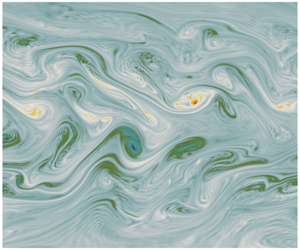Published online by Cambridge University Press: 08 July 2020

Direct statistical simulation (DSS) solves the equations of motion for the statistics of turbulent flows in place of the traditional route of accumulating statistics by direct numerical simulation (DNS). That low-order statistics usually evolve slowly compared with instantaneous dynamics is one important advantage of DSS. Depending on the symmetry of the problem and the choice of averaging operation, however, DSS is usually more expensive computationally than DNS because even low-order statistics typically have higher dimension than the underlying fields. Here we show that it is in some cases possible to go much further by using a form of unsupervised learning, proper orthogonal decomposition, to address the ‘curse of dimensionality’. We apply proper orthogonal decomposition directly to DSS in the form of expansions in equal-time cumulants to second order. We explore two averaging operations (zonal and ensemble) and test the approach on two idealized barotropic models of fluid on a rotating sphere (a jet that relaxes deterministically towards an unstable profile and a stochastically driven flow that spontaneously organizes into jets). We show that the method offers the possibility of parameter continuation, in the reduced basis, for the lower-order statistics of the flow. Order-of-magnitude savings in computational cost are sometimes obtained in the reduced basis, potentially enabling access to parameter regimes beyond the reach of DNS.